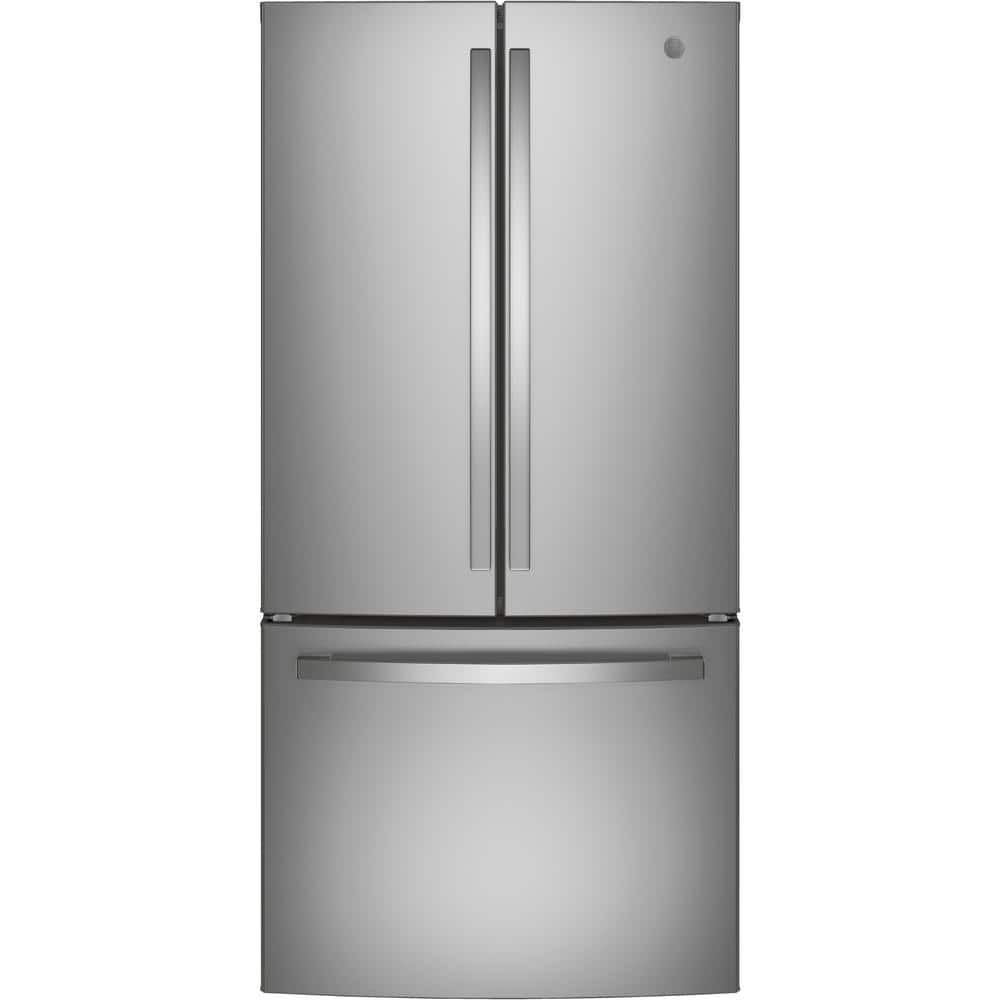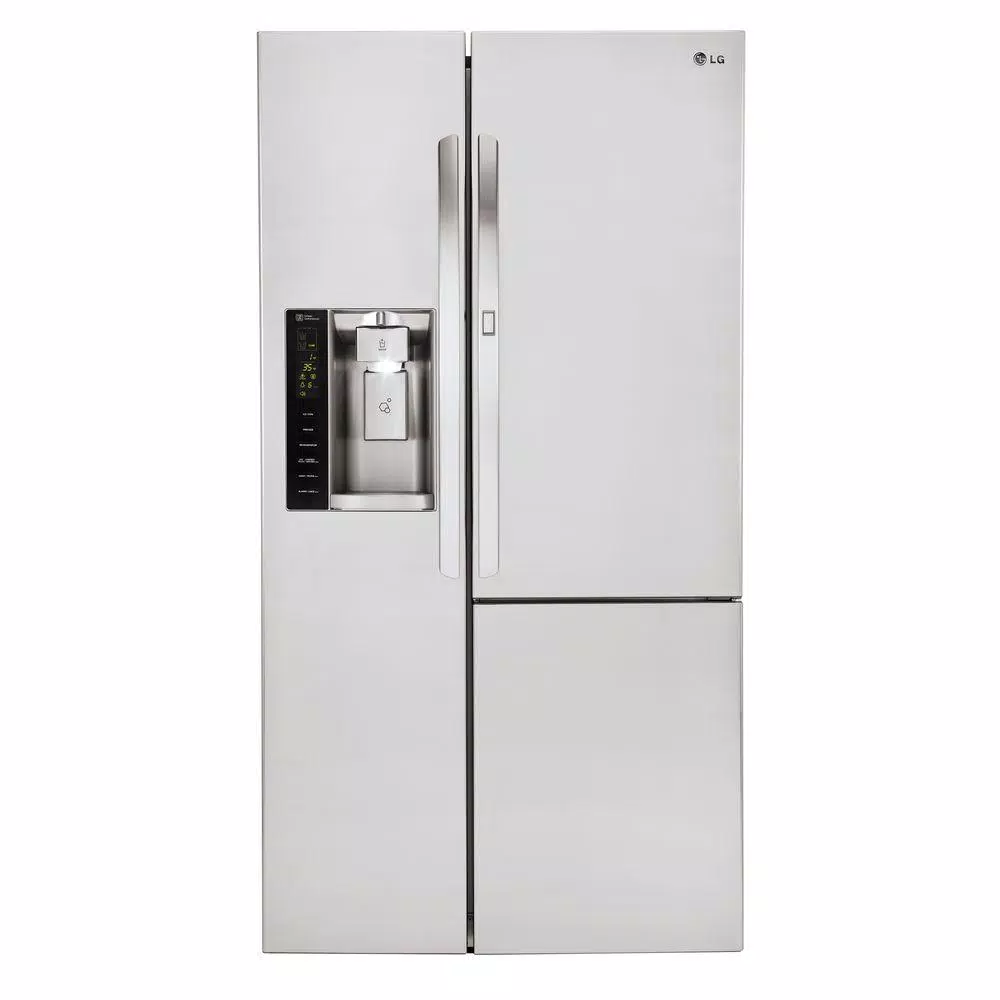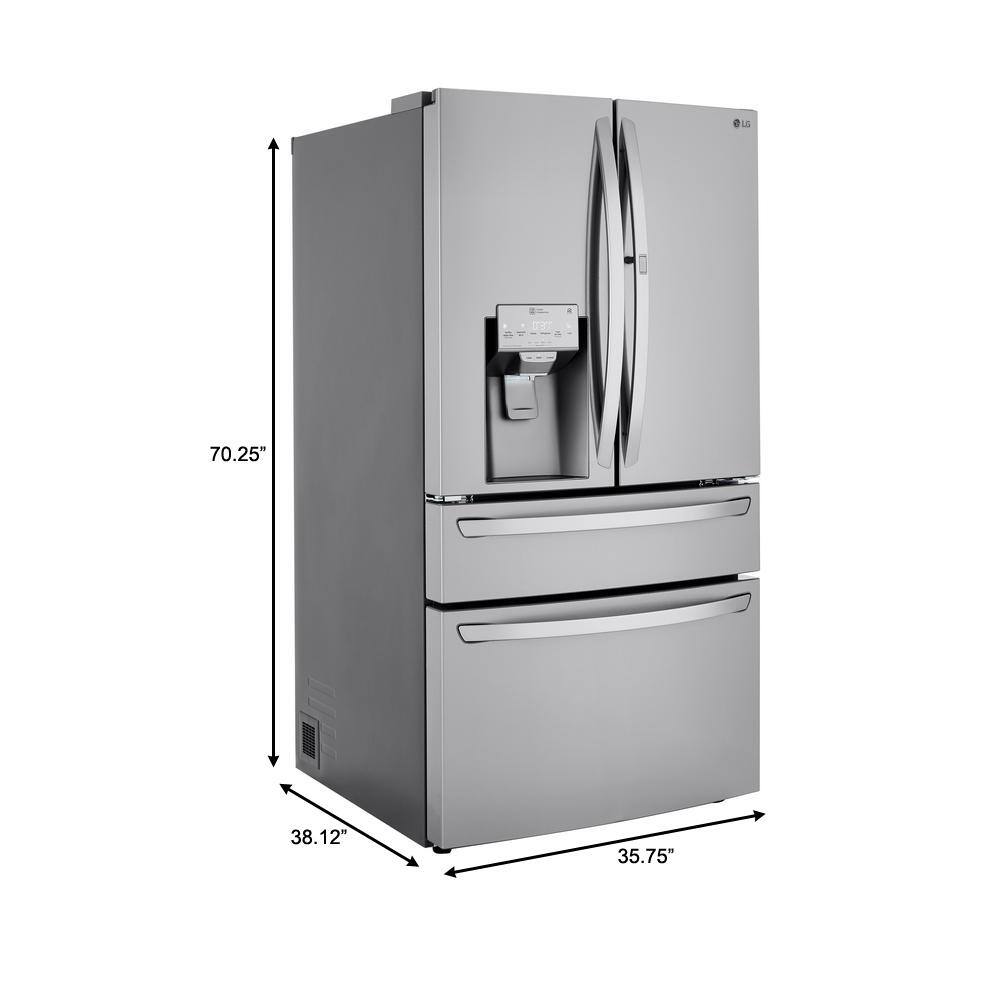GE 18.6 cu. ft. French Door Refrigerator in Stainless Steel, Counter Depth
Counter depth design creates a sleek built-in look. Internal water dispenser delivers water with one touch. LED lighting makes items easy to spot and retrieve.
GE appliances provide up-to-date technology and exceptional quality to simplify the way you live. With a timeless appearance, this family of appliances is ideal for your family. And, coming from one of the most trusted names in America, you know that this entire selection of appliances is as advanced as it is practical.
- Counter-depth design – Offers a built-in look by fitting nearly flush with surrounding cabinetry
- Internal water dispenser – Delivers filtered water with one touch
- Factory-installed icemaker with water filtration system – Refrigerator comes ready to automatically create filtered ice
- LED lighting – Find exactly what you’ve been looking for under crisp, clear lighting
- 2 humidity-controlled drawers and 1 full-width adjustable-temperature drawer –
- Turbo Cool setting – Drops interior temperature to maintain freshness after frequent openings
- Multi-level freezer baskets – Keep frozen foods organized and easy to find
- Upfront temperature controls with actual temperature display – Easy-to-reach controls display accurate temperatures
- Quick Space shelf – Quickly slides out of the way to make room for tall items
- Advanced water filtration uses XWF replacement filter
- Fits 33 in. openings
- Limited 1-year entire appliance warranty
- Designer style handle design
- Energy Star
Additional information
| Depth (Excluding Handles) | 29 |
|---|---|
| Depth (Including Handles) | 31 |
| Depth (Less Door) | 24.125 |
| Depth With Door Open 90 Degrees (In) | 42 |
| Height to Top of Door Hinge (in.) | 69.875 |
| Height to Top of Refrigerator (in.) | 68.625 |
| Product Depth x Height x Width (in.) | 31 x 69.88 x 32.75 |
| Refrigerator Width (In.) | 32.75 |
| Certifications and Listings | Certifications and Listings |
| Manufacturer Warranty | Limited 1-year entire appliance |






by Loriann
Surprisingly Pleased! We had been looking for about 6 months to replace a 28 yr old fridge. We have a galley kitchen and needed a smaller counter depth frig. I was insistent on two things….double doors and a bottom freezer. He was insistent on two things…correct size and no ice fancy water/ ice machine. He’s a Heat/AC service guy and works on ice machines also. Nothing but horror stories on that subject, leaks, mold etc. =Gross! We both agreed on Slate because we don’t like fingerprints and price, less than $2000. Home Depot was exceptional from Step 1 of our process. We were concerned it would be 6+ months between ordering and receiving one because of coronavirus. Shout out to Jackie in the Appliance dept. helped us through the whole order process in about 20 minutes. She ordered one form a warehouse to be shipped to our closet location ( Hermiston, Or) for pickup and two days later she personally called and said it was in. We picked it up the very next Saturday and it was pouring rain. After inspecting for dents…they wrapped it tight with plastic and helped load it to go over a steep mountain home. (2 hour drive) Our son came to help in put in in and he described opening it up as Uhwahhhhh! like opening the doors to heaven when it lights up. My grandkids love that it beeps when your have the door open too long. My fear was the comments in the reviews about the loudness of it running and the small freezer storage. There is definitely more room inside the refrigerator than my old one. YES, the freezer is a bit small but I have an extra small freezer in the garage to help with that and NO, there is no loud noise. This is whisper quiet to me. The only reason I gave 4 star review is because of the opening and closing of the doors are little bit loud and drawers are all plasticky and probably will not last 20 yrs like the old ones did but Hey~ we know how times have certainly changed in sturdiness of new products. We’re happy with our purchase and thankful to Home Depot for the help 😉
by Renee
Works great. Love the turbo cool feature.
by Alliance
Great change from the dual power RV frig. Pros: More room in the cooling area, ice maker and fresh cooled water. Cons: freezer is very small, dual power frig actually had a bigger freezer.
by Sherose
This is a smallie refrigerator than we are used to but we absolutely love it. It’s laid out very well and there is lots of Room on the doors for storage. So far so good!
by Smith
We finally got rid of our side by side GE refrigerator and upgraded to this one with a freezer drawer. What a difference! I love it so far.
by Candy
I love everything about this frig. I’m recently widowed and to kept busy I’m remodeling. First thing I researched was a frig. I love that it’s countertop depth, water dispenser in the frig so the outside of the frig looks classy and there is so much room. I just love it.
by Swegen
So far, all is good with the new frig! Our first bottom drawer freezer and its works for us. Selected the internal water dispenser feature vs through door. We like this feature as no maintenance is required vs the through door feature. The French doors are another feature we like that allows better access across the frig. Our last GE frig lasted 23 years, we trust this one will too.
by Jim
Love my new French door GE refrigerator with freezer/ice maker on bottom! The French door set up is fabulous as you can store large items (large pizza box, sheet cakes, etc.) Can’t go wrong with GE brand…great American company around for years and products last forever…also purchased GE slide-in gas range! Love it as well!
by Fridge
This was a challenge to say the least. I live in a 2013 5th wheel trailer and it had an absorption fridge, that was not good. I would load it with groceries and it would take hours to return to temp. Removing it and doing the carpentry to fit in my new GE fridge was quite a bit of work, but it has paid off greatly. I love my new fridge:-)